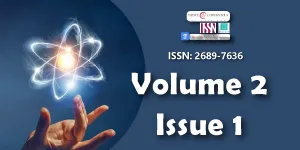Black quanta. On the thermodynamics of the black holes
Main Article Content
Abstract
It is shown that the quantized internal motion of the black holes consists of Planck quanta (Planck mass, length, time, etc), which may be called black quanta. The mass of the black hole is a integral multiple of the Planck mass, and the radius of the black hole (Schwarzschild radius) is an integral multiple of the Planck length. This circumstance arises from the proportionality of the black hole radius and mass. The statistical physics and the thermodynamics of the black holes are derived herein from the statistical motion of the black quanta.
Downloads
Article Details
Copyright (c) 2019 Apostol M.

This work is licensed under a Creative Commons Attribution 4.0 International License.
Licensing and protecting the author rights is the central aim and core of the publishing business. Peertechz dedicates itself in making it easier for people to share and build upon the work of others while maintaining consistency with the rules of copyright. Peertechz licensing terms are formulated to facilitate reuse of the manuscripts published in journals to take maximum advantage of Open Access publication and for the purpose of disseminating knowledge.
We support 'libre' open access, which defines Open Access in true terms as free of charge online access along with usage rights. The usage rights are granted through the use of specific Creative Commons license.
Peertechz accomplice with- [CC BY 4.0]
Explanation
'CC' stands for Creative Commons license. 'BY' symbolizes that users have provided attribution to the creator that the published manuscripts can be used or shared. This license allows for redistribution, commercial and non-commercial, as long as it is passed along unchanged and in whole, with credit to the author.
Please take in notification that Creative Commons user licenses are non-revocable. We recommend authors to check if their funding body requires a specific license.
With this license, the authors are allowed that after publishing with Peertechz, they can share their research by posting a free draft copy of their article to any repository or website.
'CC BY' license observance:
|
License Name |
Permission to read and download |
Permission to display in a repository |
Permission to translate |
Commercial uses of manuscript |
|
CC BY 4.0 |
Yes |
Yes |
Yes |
Yes |
The authors please note that Creative Commons license is focused on making creative works available for discovery and reuse. Creative Commons licenses provide an alternative to standard copyrights, allowing authors to specify ways that their works can be used without having to grant permission for each individual request. Others who want to reserve all of their rights under copyright law should not use CC licenses.
Schutz BF (1985) A first course in general relativity. Cambridge University Press, Cambridge. Link: https://bit.ly/208FpIN
Wald RM (1994) Quantum field theory in curved spacetime and black hole thermodynamics (Chicago lectures in physics). The University of Chicago Press, Chicago. Link: https://bit.ly/2YqI192
Apostol M (2008) Covariance, curved space, motion and quantization. Progr Phys 1: 90. Link: https://bit.ly/2XkXqWW
Hawking SW (1975) Particle creation by black holes. Commun Math Phys 43: 199-220. Link: https://bit.ly/2LvZGZ9
Hawking S (1971) Gravitational radiation from colliding black holes. Phys Rev Lett 26: 1344. Link: https://bit.ly/2KTeP7E

